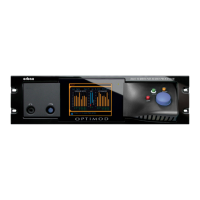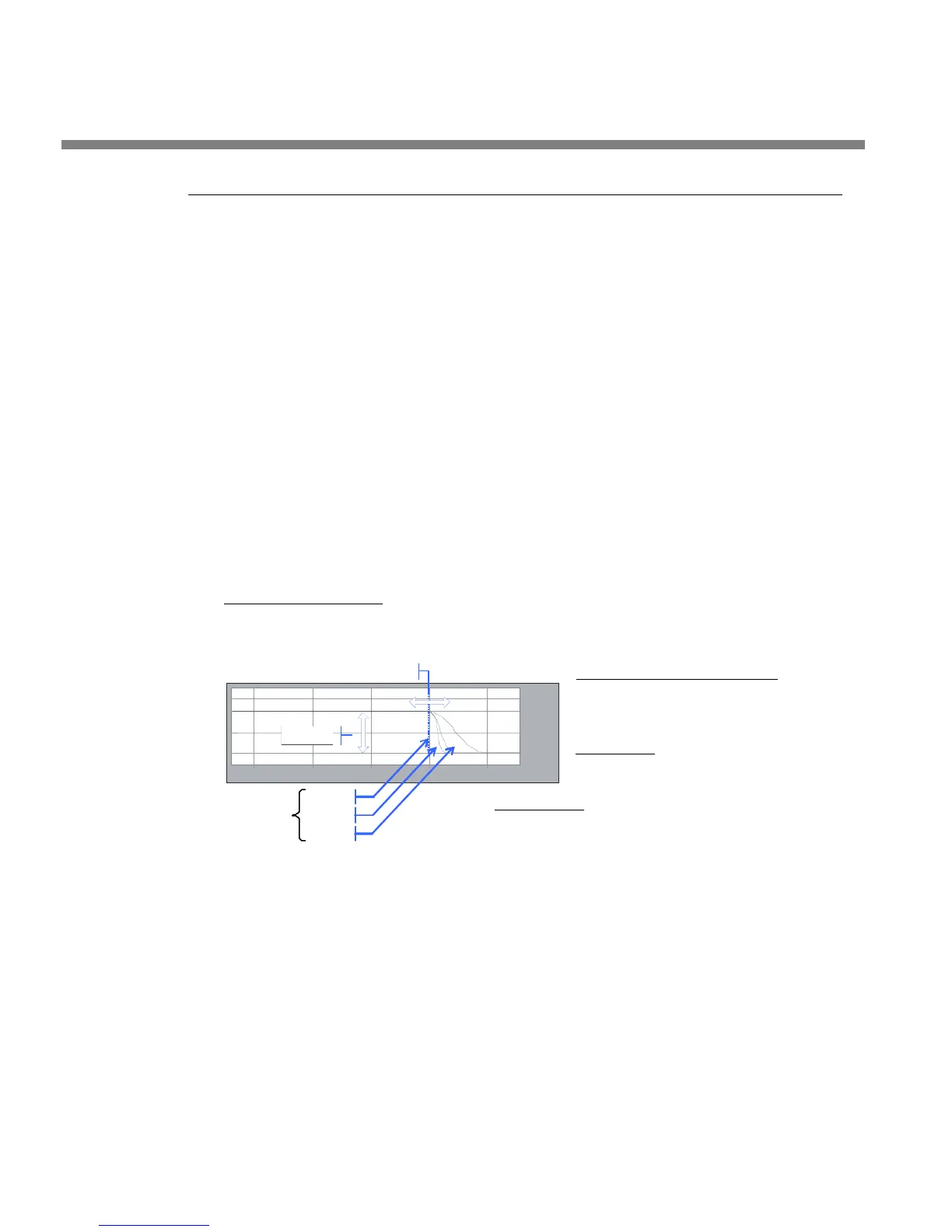3-36
OPERATION ORBAN MODEL 8685
Hz 55 110 220 440
0 dB
+3 dB
+6 dB
Bass Gain
Bass Shelf Hin
e Fre
uenc
6dB/oc
12dB/oct
18dB/oct
Bass Slope
Equalizer Controls
The table summarizes the equalization controls available for the Five-Band struc-
ture. (Note that “advanced” controls are accessible only from 8685 PC Remote soft-
ware.)
Except for B
RILLIANCE and DJ BASS, these equalization controls are common to both
the Two-Band and Five-Band structures. The equalizer is located between the AGC
and multiband compressor sections of both structures.
Any equalization that you set will be automatically stored in any User Preset that
you create and save. For example, you can use a User Preset to combine an unmodi-
fied Factory Programming Preset with your custom equalization. Of course, you can
also modify the Factory Preset (with Basic Modify, Intermediate Modify, or Advanced
Modify) before you create your User Preset.
In general, you should be conservative when equalizing modern, well-recorded pro-
gram material. This is particularly true with general-purpose video programming.
The discussion below applies mainly to radio-style applications
Except for B
ASS GAIN, most of the factory presets use less than 3 dB of equalization.
Bass Shelf Controls
, the Five-Band structure’s low bass equalization controls, are
designed to add punch and slam to rock and urban music. They provide a parametric
shelving equalizer with control over gain, hinge frequency, and slope (in dB/octave).
Bass Hinge Frequency
sets the
frequency where shelving starts to
take effect.
Bass Gain
sets the amount of bass
boost (dB) at the top of the shelf.
Bass Slope
sets the slope (dB/octave) of the
transition between the top and bottom of the shelf.
The moderate-slope (12 dB/octave) shelving boost achieves a bass boost that is more
audible on smaller receivers, but which can sound boomier on high-quality receivers
and home theater systems. The steep-slope (18 dB/octave) shelving boost creates a
solid, punchy bass from the better consumer receivers and home theater systems
with decent bass response. The 6 dB/octave shelving boost is like a conventional
tone control and creates the most mid-bass boost, yielding a “warmer” sound. Be-
cause it affects the mid-bass frequency range, where the ear is more sensitive than it
is to very low bass, the 6 dB/octave slope can create more apparent bass level at the
cost of bass “punch.”
There are no easy choices here; you must choose the characteristic you want by
identifying your target audience and the receivers they are most likely to be using.
Often, you will not want to use any boost at all for general-purpose sound-for-
picture programming because this can exaggerate rumble and other low frequency

